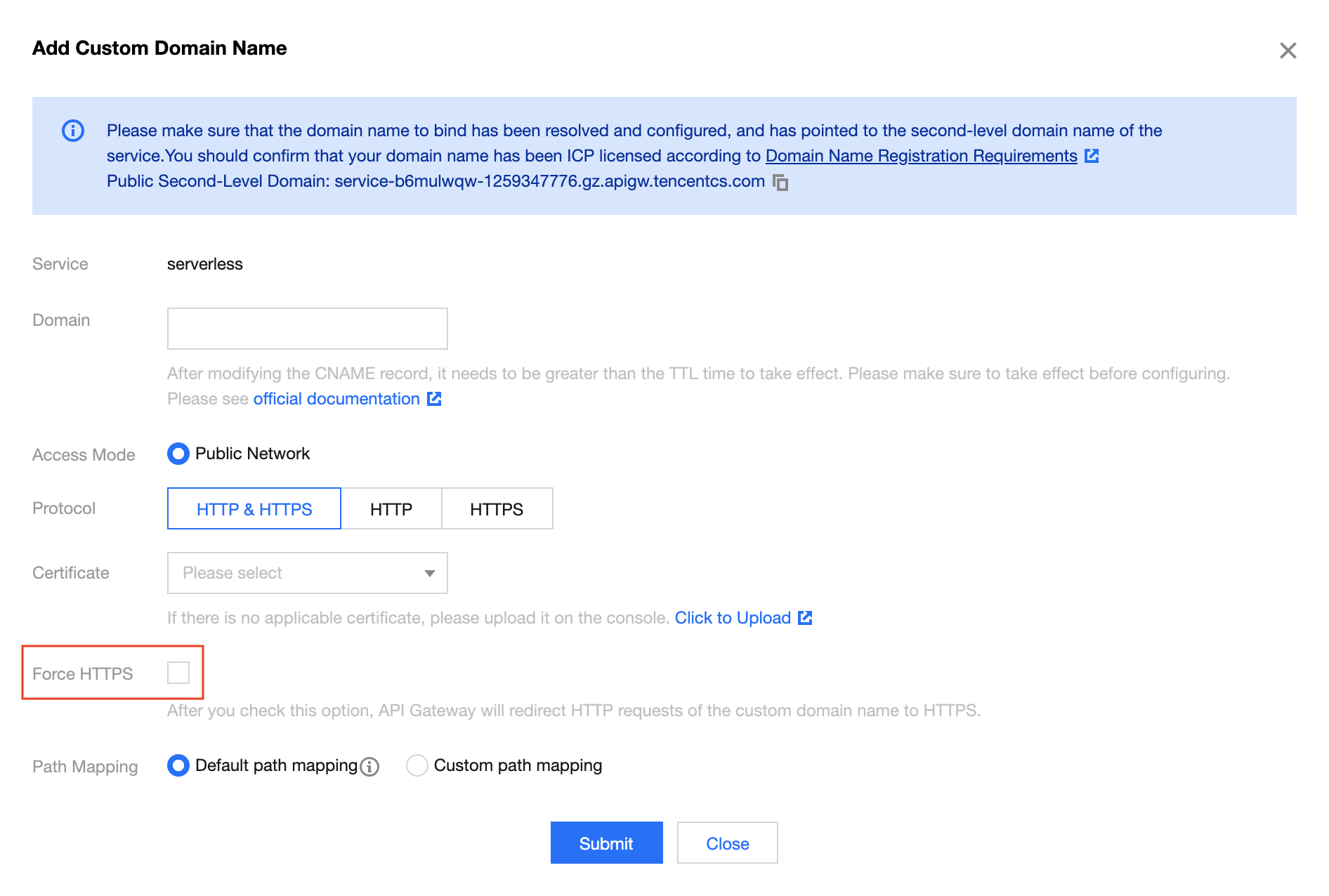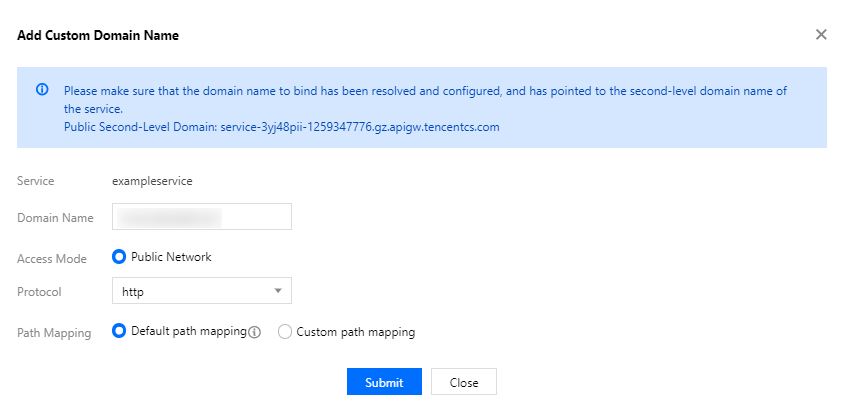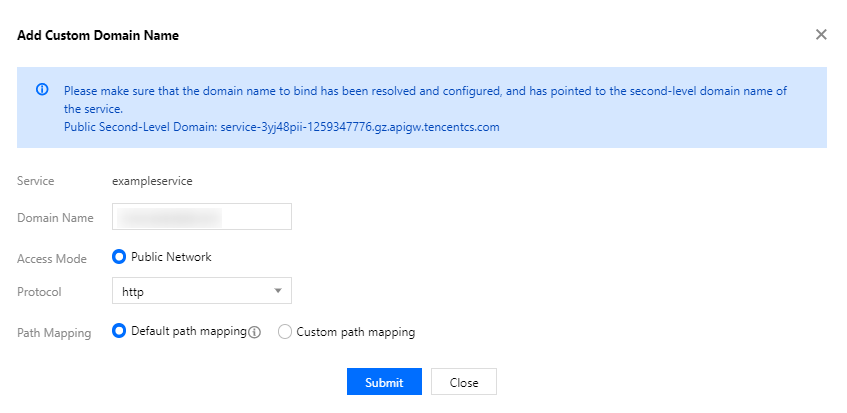配置自定义域名
最后更新时间:2023-12-22 09:52:34
配置自定义域名
最后更新时间: 2023-12-22 09:52:34
操作场景
用户可通过域名绑定功能,将用户所拥有的独立域名绑定到服务,使得服务能以用户自身独立域名的方式提供。
前提条件
确保需绑定的域名已经完成解析配置。
操作步骤
关联自定义域名
1. 登录 API 网关控制台,在左侧导航栏单击服务。
2. 在服务列表页,单击服务 ID,进入服务详情页。
3. 在服务详情页,选择自定义域名,单击页面左上角的新建,填写配置信息后,单击提交。
说明:
如果需要支持独立域名的 HTTPS 协议,需要提交域名的 SSL 证书。证书可以通过文件上传的方式或通过填写证书名称、内容和私钥的方式提交。
修改 CNAME 后过一段时间才能生效,请确保生效后再进行配置操作,否则会配置失败。
独立域名选择 HTTPS 协议时,也默认支持 WSS 协议。
4. 配置 CNAME 解析完成后,在服务内配置绑定独立域名(请确保先配置 CNAME 解析,再配置绑定)。
5. 若需要解绑,需先删除服务内绑定的独立域名,再删除独立域名的 CNAME。
配置强制 HTTPS
在自定义域名配置页面,当协议为 HTTP&HTTPS、HTTPS 时,支持开启强制 HTTPS 功能。开启后,API 网关会将使用该自定义域名的 HTTP 协议的请求重定向至 HTTPS 协议。


配置域名路径映射
1. 在自定义域名列表页,单击操作列的编辑路径映射。


2. 选择路径映射类型:
默认路径映射:路径的 URL 为
自定义域名/环境名,例如www.XXXXX.com/release指向本服务中的发布环境,www.XXXXX.com/prepub指向本服务中的预发布环境,www.XXXXX.com/test指向本服务中的测试环境。

自定义路径映射:路径时的 URL 为
自定义域名/自定义路径,这个 URL 则指向您所映射的环境。例如配置路径为/mypath,环境为发布环境,则发布环境的 URL 为www.XXXXX.com/mypath。当您想使用根路径时,可直接配置路径为/。

注意:
使用自定义路径映射时,原本默认路径映射不生效,即
自定义域名/环境名均不生效。
配置后自定义路径映射与默认路径映射还可以进行编辑。3. 单击提交,完成配置。
文档反馈
